In a world where precision and accuracy reign supreme, understanding the concept of "flatness" becomes paramount. Whether you're in engineering, mathematics, or the manufacturing sector, the significance of achieving optimal flatness cannot be overstated. Join me on a journey as we delve into the nuances and practical applications of this crucial aspect across various domains.
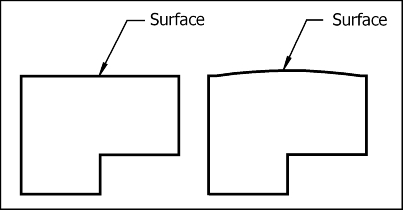
Flatness, as a fundamental concept, resonates across various domains, encompassing engineering, mathematics, manufacturing, and beyond. At its core, flatness signifies the state or quality of being flat or level without any undulations or irregularities across a surface. This seemingly straightforward attribute holds immense significance in diverse industries, dictating precision, quality, and functionality.
To comprehend the essence of flatness comprehensively, it's imperative to recognize its multidimensional nature. In engineering, flatness pertains to the degree of deviation from a true plane surface. Whether it's in the context of surface finishes in manufacturing or geometric tolerances in design, the definition evolves to suit specific applications. Furthermore, in mathematics, flatness encompasses the concept of planarity and the absence of curvature.
In the engineering realm, flatness finds expression within the principles of Geometric Dimensioning and Tolerancing (GD&T). Here, it serves as a critical parameter defining the permissible deviation of a surface from an ideal plane. The flatness symbol within GD&T specifications delineates these permissible variations, ensuring the precision necessary for manufacturing and design specifications.
Flatness tolerance emerges as a defining factor in engineering and manufacturing processes. It sets the acceptable limit of variation from the desired flatness in a component or surface. Engineers meticulously define these tolerances in blueprints and technical drawings, maintaining a delicate balance between functionality, cost-effectiveness, and manufacturing feasibility.
Precision manufacturing hinges on the stringent adherence to flatness standards. Industries like aerospace, automotive, and semiconductor rely heavily on maintaining exceptionally flat surfaces to ensure optimal functionality and reliability. Achieving and measuring these levels of flatness demands advanced technologies and precise methodologies, underscoring its critical role in these sectors.
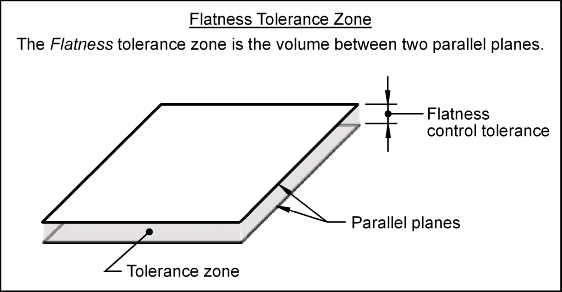
In the realm of engineering, precision holds paramount importance, especially in manufacturing. Flatness plays a pivotal role in determining the quality and functionality of CNC machined parts and surfaces. Whether it's ensuring the flatness of a metal sheet in automotive body panels or achieving precise surfaces in semiconductor manufacturing, adhering to strict flatness standards is indispensable.
Differentiating between flatness and parallelism is crucial in engineering and design. While both concepts involve geometric relationships between surfaces, they bear distinct characteristics. Flatness focuses on the overall surface evenness, while parallelism emphasizes the alignment of two surfaces in relation to each other. Understanding their differences aids in making informed decisions in various applications.
Product design relies significantly on flatness specifications to ensure functionality and compatibility. From electronic gadgets requiring flat circuit boards to architectural designs necessitating even surfaces, flatness considerations drive innovation and functionality. Incorporating precise flatness specifications at the design stage is pivotal in achieving the desired performance of the end product.
Measuring flatness demands sophisticated tools and techniques. Engineers and manufacturers employ advanced metrology instruments such as coordinate measuring machines (CMMs) and laser scanning devices to ascertain flatness accurately. These tools facilitate the evaluation of deviations from the ideal surface, ensuring compliance with stringent flatness standards.
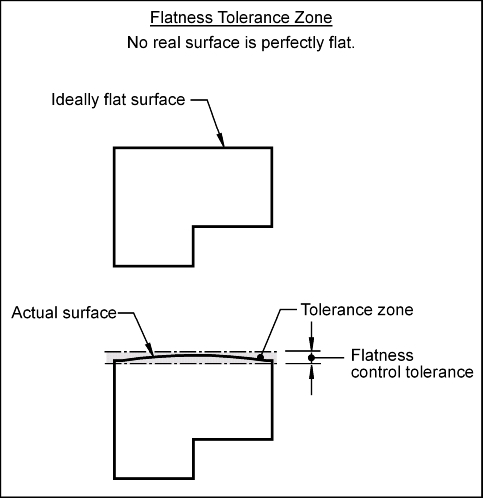
Achieving accurate flatness measurements demands advanced engineering metrology techniques. Employing state-of-the-art tools like interferometers, profilometers, and atomic force microscopes allows for precise assessments of surface flatness. These tools provide engineers with detailed insights into deviations from the ideal plane, facilitating meticulous quality control.
Coordinate Measuring Machines (CMMs) are instrumental in evaluating flatness with unparalleled precision. By employing touch probes or non-contact methods, CMMs enable comprehensive surface mapping. This facilitates the identification of deviations and assists in generating detailed reports, ensuring components meet stringent flatness specifications.
Laser scanning technologies have revolutionized flatness measurement by offering non-contact and high-speed scanning capabilities. 3D profiling, facilitated by laser scanners, allows for the rapid assessment of large surfaces with exceptional accuracy. This approach is particularly advantageous in industries requiring swift and detailed flatness evaluations.
The integration of Artificial Intelligence (AI) in flatness measurement introduces a new dimension of efficiency. AI algorithms can analyze vast datasets generated during flatness assessments, identifying patterns and deviations that might be imperceptible to the human eye. This enhances the overall accuracy and reliability of flatness evaluations.
Different industries have unique flatness requirements based on the nature of their products. Establishing industry-specific measurement standards ensures that flatness evaluations align with the intended application. This tailored approach guarantees that the defined flatness criteria meet the specific needs of diverse sectors, from aerospace to electronics.
In the realm of engineering drawings, symbols convey precise information, acting as a universal language for professionals. The symbolic representation of flatness is a critical element in communicating design and manufacturing requirements. Understanding these symbols is imperative for ensuring accurate and consistent interpretation across different projects and industries.
Geometric Dimensioning and Tolerancing (GD&T) employs a standardized set of symbols to communicate geometric requirements, including flatness. The flatness symbol, often appearing as a parallelogram, denotes the permissible variation from a perfectly flat surface. Decoding these symbols requires a nuanced understanding of GD&T principles and their practical implications in design and manufacturing.
To foster global consistency in engineering communication, international standards govern the usage of symbols, including those representing flatness. The International Organization for Standardization (ISO) and other regulatory bodies prescribe guidelines for the correct depiction of flatness symbols. Adhering to these standards ensures clarity and precision in engineering drawings on a global scale.
Flatness symbols in engineering drawings directly impact manufacturing processes. They guide machinists and technicians in producing components with the specified surface characteristics. Understanding and correctly applying these symbols are integral to achieving the desired quality and functionality of the final product.
In the era of digital design and manufacturing, Computer-Aided Design (CAD) software plays a pivotal role in creating and interpreting flatness symbols. These tools allow for seamless integration of GD&T principles, enabling precise symbolic representation and eliminating ambiguities in design and production processes.
Clarity in symbolic representation is indispensable for effective communication in engineering. By harnessing the power of clear and standardized flatness symbols, professionals can streamline processes, reduce errors, and ensure the accurate realization of design intent. In the upcoming section, we will explore the intersection of flatness with CNC machining technologies.
Computer Numerical Control (CNC) machining stands as a pinnacle of precision engineering. The significance of flatness in CNC machining cannot be overstated. CNC machines are capable of achieving exceptional flatness on surfaces critical for various industries, ensuring accuracy and reliability in the final products.
Flatness directly influences the efficiency and effectiveness of CNC machining processes. Achieving precise flatness minimizes material wastage, reduces machining time, and enhances overall productivity. It ensures components fit seamlessly, meeting stringent dimensional and performance requirements.
Emerging advancements in CNC technologies continually push the boundaries of achievable flatness. High-precision CNC machines equipped with sophisticated controls, tooling, and monitoring systems allow for enhanced control over surface flatness. These technologies empower manufacturers to meet ever-stringent flatness specifications.
Flatness serves as a key indicator of quality in CNC turning machining. Rigorous quality assurance measures, including continuous monitoring and inspection during CNC processes, ensure that surfaces maintain the specified flatness. This meticulous attention to detail guarantees the precision and reliability of machined components.
The future of CNC machining envisions deeper integration of flatness optimization techniques. Innovations in materials, tooling, and machine controls will further refine flatness control, allowing for higher precision and efficiency. This evolution promises a more streamlined and effective manufacturing landscape.
Flatness, as an integral element in CNC machining, stands as a cornerstone for innovation. By leveraging advancements in CNC technologies and optimizing flatness, manufacturers can propel industries forward, setting new benchmarks for precision and quality.
The landscape of flatness measurement tools has undergone remarkable evolution. From traditional methods using straight edges and feeler gauges to modern precision instruments like laser interferometers and 3D optical profilers, the range and accuracy of tools have significantly expanded. These advancements have revolutionized flatness assessment across industries.
Laser interferometry stands at the forefront of high-precision flatness measurement. Offering sub-micron accuracy, this technique utilizes interference patterns of laser light to evaluate surfaces with exceptional precision. Its non-contact nature and ability to measure over large areas make it invaluable in industries demanding utmost accuracy.
Optical profiling techniques, leveraging confocal microscopy and white light interferometry, enable comprehensive surface mapping. These methods meticulously capture surface topography, aiding in identifying irregularities and deviations from the desired flatness. Their non-destructive nature and high-resolution imaging contribute to precise evaluations.
Atomic Force Microscopy (AFM) allows for nanoscale flatness assessment by scanning surfaces with a sharp probe tip. This high-resolution technique probes surface features, uncovering minute deviations and providing topographical insights at an atomic level. AFM's unparalleled precision is invaluable in industries necessitating ultra-precise flatness standards.
The integration of Artificial Intelligence (AI) algorithms with advanced measurement tools marks the next frontier in flatness evaluation. AI-driven analytics and machine learning models are poised to enhance accuracy, efficiency, and predictive capabilities in assessing and predicting surface flatness deviations.
Advanced flatness measurement technologies are instrumental in driving innovation across industries. By pushing the boundaries of precision and enabling comprehensive surface analysis, these tools lay the groundwork for enhanced quality, reliability, and performance in diverse applications.
Throughout this exploration, we've uncovered the profound significance of flatness in the realms of engineering, manufacturing, and design. From its foundational definitions to its pivotal role in CNC machining, we've witnessed how flatness dictates precision, reliability, and innovation across diverse industries.
The intricacies of flatness measurement, the symbolic representations in engineering drawings, and the evolution of cutting-edge measurement technologies underscore the critical importance of achieving optimal flatness. As technology advances and industries demand ever-increasing precision, the role of flatness in ensuring quality and performance becomes even more paramount.
Embracing and harnessing the power of advanced measurement techniques, AI integration, and CNC machining capabilities, professionals across various sectors are poised to set new benchmarks for precision and efficiency. The pursuit of perfection in flatness aligns with the relentless pursuit of excellence in engineering and manufacturing landscapes.
As we navigate a future defined by innovation and precision, the essence of flatness stands as a guiding principle, shaping the quality, reliability, and functionality of the products that propel our world forward.
The journey of exploring flatness doesn't end here; it continues to evolve, driven by technological advancements and the quest for perfection. Let us embark on this journey together, shaping a future where precision knows no bounds.
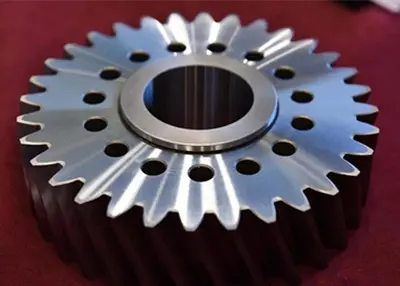 Types of Gears: An Overview of Various Mechanical GearsApril 26, 2024This article is about important information you need to know about gears, including types of gears, applications, production and advantages and disadvantages.view
Types of Gears: An Overview of Various Mechanical GearsApril 26, 2024This article is about important information you need to know about gears, including types of gears, applications, production and advantages and disadvantages.view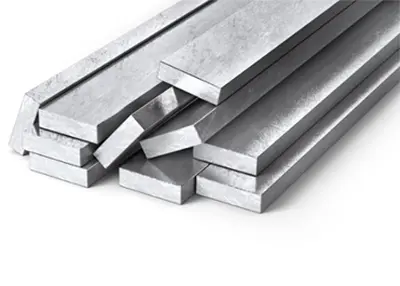 What five axes does the five axes machining center have?March 6, 2023Five-axis machining centers have long been important in the aerospace industry, where machined parts follow the aerodynamic form of the aircraft. Some machines move the rotary axis simply to position ...view
What five axes does the five axes machining center have?March 6, 2023Five-axis machining centers have long been important in the aerospace industry, where machined parts follow the aerodynamic form of the aircraft. Some machines move the rotary axis simply to position ...view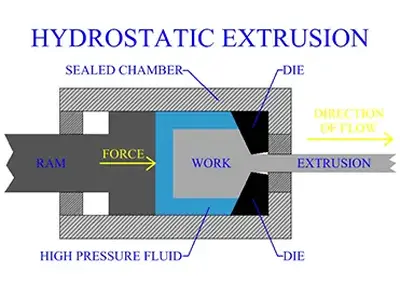 Extrusion: A Manufacturing Process for Creating Various Shapes and ProductsNovember 30, 2023what is extrusion?Extrusion is a process of forcing a material through a die or a nozzle to create a continuous shape or product. The material can be solid, liquid, or semi-solid, and it can be metal,...view
Extrusion: A Manufacturing Process for Creating Various Shapes and ProductsNovember 30, 2023what is extrusion?Extrusion is a process of forcing a material through a die or a nozzle to create a continuous shape or product. The material can be solid, liquid, or semi-solid, and it can be metal,...view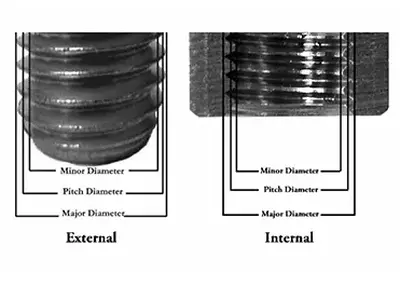 UNF Threads vs UNC Threads and What Are UNF Threads and UNC ThreadsNovember 17, 2023In the intricate world of CNC machining, understanding the nuances of UNF Threads and UNC Threads is paramount. These threading standards, Unified National Fine (UNF) and Unified National Coarse (UNC), serve as the bedrock of precision in mechanical engineering. Let's delve into the specifics, exploring their applications, differences, and the critical role they play in the realm of precision machining.view
UNF Threads vs UNC Threads and What Are UNF Threads and UNC ThreadsNovember 17, 2023In the intricate world of CNC machining, understanding the nuances of UNF Threads and UNC Threads is paramount. These threading standards, Unified National Fine (UNF) and Unified National Coarse (UNC), serve as the bedrock of precision in mechanical engineering. Let's delve into the specifics, exploring their applications, differences, and the critical role they play in the realm of precision machining.view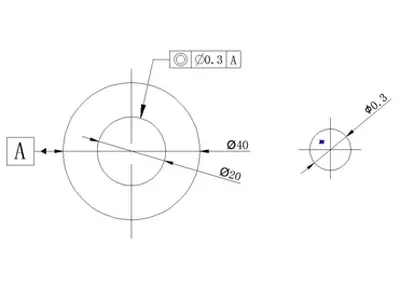 Positioning control - concentricity/coaxialityNovember 17, 2023When manufacturing cylindrical CNC milled parts, concentricity is the unit of measure of part accuracy. Concentricity, is the degree to which the inner diameter of the insert is offset from the center of the entire circle.view
Positioning control - concentricity/coaxialityNovember 17, 2023When manufacturing cylindrical CNC milled parts, concentricity is the unit of measure of part accuracy. Concentricity, is the degree to which the inner diameter of the insert is offset from the center of the entire circle.view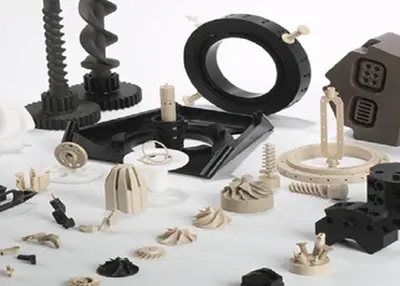 The Features and Characteristics of CNC Milling MaterialsFebruary 29, 2024CNC milling, a cornerstone in the manufacturing processes of various industries, hinges significantly on the selection of materials.view
The Features and Characteristics of CNC Milling MaterialsFebruary 29, 2024CNC milling, a cornerstone in the manufacturing processes of various industries, hinges significantly on the selection of materials.view